A pivotal part of the American Dream—home ownership—seems more out of reach for many people than ever before.
Roughly 70% of Americans say that buying a home in 2024 is “unrealistic,” according to a survey from national property intermediary service IPX1031. You can largely chalk that up to cost—63% said they cannot afford to purchase a home.
Home prices might seem too high compared to your area’s median income. That said, increased workplace flexibility has made it a little easier for would-be homeowners to shop around. If you work remotely, it’s possible to get a California or New York salary while living in North Dakota or West Virginia. And there are other age-old alternatives, such as finding a new employer or transferring to a different corporate office in a place where cost of living and home prices are a little more balanced.
But what if you don’t want to move to the middle of nowhere? Sure, small towns are known for smaller housing prices. However, if you want to be a little closer to restaurants, museums, sports, and more, you’ll want to live in and around a city—and largely speaking, that means larger housing costs.
Fear not. If you’re wondering where you might be able to make your homeownership dream a reality, I have a number of cities where you can begin your search. Read on as I highlight some of the most affordable places to buy a house.
Methodology

Data for this article used to identify these cheapest cities to buy a house come from the Council for Community and Economic Research (C2ER), which among other things provides research and data about the cost of living across the U.S.
Specifically, I’m looking at data from their Cost of Living Index, which measures relative price levels for consumer goods and services—namely, grocery items, health care, housing, transportation, utilities, and miscellaneous goods—in 276 participating urban areas. And I’m winnowing the selection down to U.S. cities with at least 100,000 residents as of the 2022 census.
Average Mortgage Principal and Interest
To determine which cities offer the cheapest housing, we’ve relied on the city-wide averages for the average principal and interest (P+I) paid for new homes. This C2ER data point is based on homes with the following specifications:
- Newly built (not previously occupied)
- Single-family detached
- 2,400 square feet (not including garage)
- Full purchase price
- “Good” or “very good” construction quality based on the Marshall & Swift method
However, P+I doesn’t tell the whole story, which is why I also looked at a few other statistics that help paint a picture of a city’s general homeownership affordability:
Median Household Income and City Population
The income figures cited in this article come from the Bureau of Labor Statistics’ Current Population Survey assessment of median household income by city from 2022, the most recent year available as of the time of publication. Likewise, this same survey provides information about each city’s population.
Cost of Living vs. the National Average
This data point, provided by C2ER, represents the percentage difference between each city and the calculated national average of the total cost-of-living index.
Average Percentage of Income Spent on P+I
This calculation is a combination of the three data points above. We take the median household income for each city and divide it by 12 times the average monthly P+I. This provides a percentage that shows the amount of median household income that goes toward the average P+I.
Regarding the Commingling of Median Household Income and Mean Principal and Interest
One wonky data item I’d like to point out is a calculation we provide detailing the percentage of median household income as a percentage of the average principal and interest (P+I) paid on a mortgage. You’ll notice that some of these figures are unsustainably high. That’s due to the use of median household income provided by the Bureau of Labor Statistics (BLS) and the mean (average) principal and interest balance paid on a mortgage in these cities.
In an ideal world, we’d have a perfect match between either median household income and median mortgage payment or mean household income and mean mortgage payment. Given the limitations of the data sets we’ve used, we’re forced to marry two sets of data points that can skew how certain calculations work. As a for-instance, using median household income and mean P+I generally results in a higher average % income spent on P+I than reflects reality.
Cheapest Cities to Buy a House

Home prices aren’t the only factor to consider. A cheap house is still difficult to afford if you can’t find a job that pays well or if the cost of living in the area is astronomical. Based on C2ER data and the methodology just explained, these cities are your best options.
Now, I’ll lead you through the cheapest cities to buy a house.
These cities are listed in reverse order of average monthly P+I (from highest to lowest). However, if you’re looking to move, they aren’t the only factor you should be considering.
10. Corpus Christi, Texas
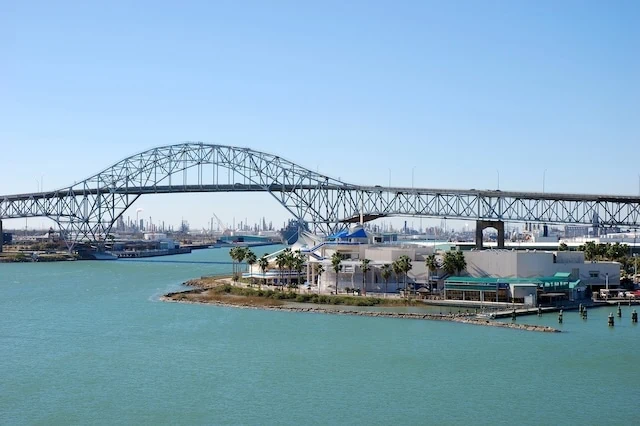
- Average monthly P+I: $1,663
- Median annual household income: $64,449
- Population: 316,239
- Average % income spent on P+I: 31.0%
- Cost of living vs. U.S. average: -9.6%
The coastal city of Corpus Christi is in southern Texas. For retirees whose bones ache when it’s cold, this city’s hot summers and short, mild winters may be ideal.
Mustang Island State Park, which has over five miles of coastline, is perfect for fishing, swimming, surfing, and bird watching. A few of Corpus Christi’s other most visited attractions include the Texas State Aquarium, a variety of museums, the Corpus Christi Botanical Gardens and Nature Center, and the USS Lexington, which was part of the set for the film Pearl Harbor.
This city has the highest median household income on the list, according to C2ER data. So not only does it have affordable housing, but workers earn more money—which is useful for making more out of your home, enjoying Corpus Christi, or traveling to other parts of the country. In the meantime, the cost of living is almost 10% below the national average, thanks not only to low housing costs, but also cheaper transportation and healthcare than much of the rest of the U.S.
Related: States With the Highest Minimum Wages
9. Fort Wayne, Indiana
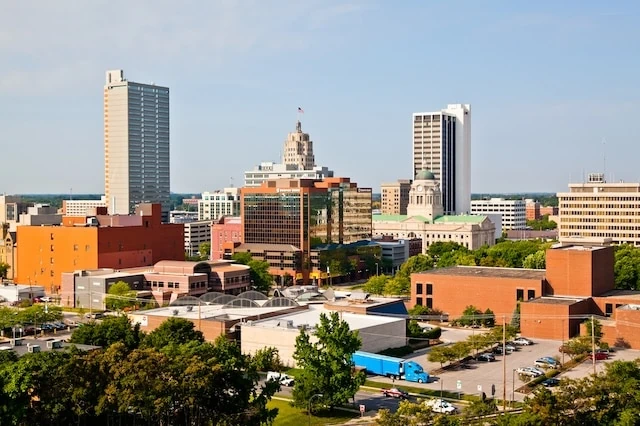
- Average monthly P+I: $1,636
- Median annual household income: $58,233
- Population: 267,927
- Average % income spent on P+I: 33.7%
- Cost of living vs. U.S. average: -9%
Fort Wayne is an “all four seasons” city in northeast Indiana’s Allen County. It’s not only the home of several colleges—including the Indiana Institute of Technology and University of Saint Francis, Fort Wayne—but also several branch campuses, including Purdue University Fort Wayne and Indiana University Fort Wayne.
Fort Wayne is also a great place for avid festival-goers: Its annual events include the Greek Festival, German Festival, and Cherry Blossom Festival. And if you’re a spiritual person (or just love church architecture), where better to live than the “City of Churches,” which is home to 360 churches representing a variety of religions?
One of the city’s biggest attractions is the Fort Wayne Children’s Zoo, which covers 40 acres and is open from late April to late October. Fortunately, there are year-round activities as well, including the Embassy Theatre, Foellinger-Freimann Botanical Conservatory, and Science Central museum.
In Fort Wayne, principal and interest will set you back $1,636 every month on average, according to C2ER data. That’s an enormous contributor to a cost of living that’s 9% below the U.S. average.
Editor’s Note: The C2ER data for Fort Wayne is taken from the entire metro area of Fort Wayne-Allen County.
Related: 10 Best Index Funds to Buy
8. Wichita, Kansas
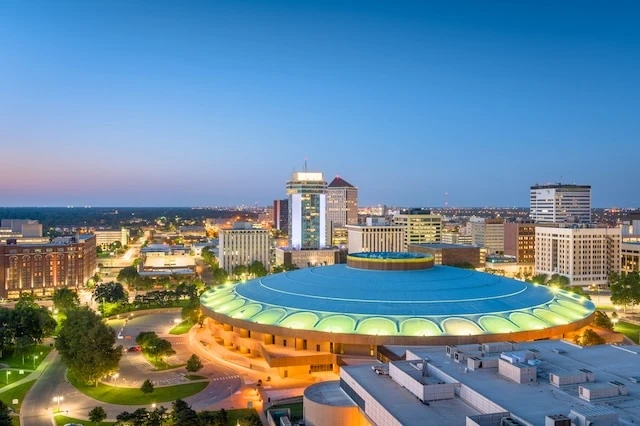
- Average monthly P+I: $1,620
- Median annual household income: $60,712
- Population: 396,192
- Average % income spent on P+I: 32.0%
- Cost of living vs. U.S. average: -10.7%
Wichita, the most populous city in Kansas, is sometimes called “The Air Capital of the World” because of its large aircraft industry. Textron Aviation, Learjet, Airbus, and Boeing/Spirit AeroSystems all operate design and manufacturing facilities there, and the city itself boasts 33 airports. (No, seriously.)
But Wichita isn’t just a good place for a layover—it has plenty of great ways to spend your time. Theater and music lovers enjoy the Music Theatre Wichita, Wichita Grand Opera, and Wichita Symphony Orchestra. You can watch future Minnesota Twins play for the Wichita Wind Surge. Locals can also spend time at the Botanica, The Wichita Gardens, The Wichita Art Museum, or one of the city’s historical museums.
Not only does Wichita sport a low average monthly P+I of $1,620 per month, but it also has a cost of living that’s nearly 11% below the U.S. average. You can thank lower-than-average costs of transportation, good sand services, health care, and groceries.
Related: Top 15 Cities With the Highest Minimum Wages
7. El Paso, Texas
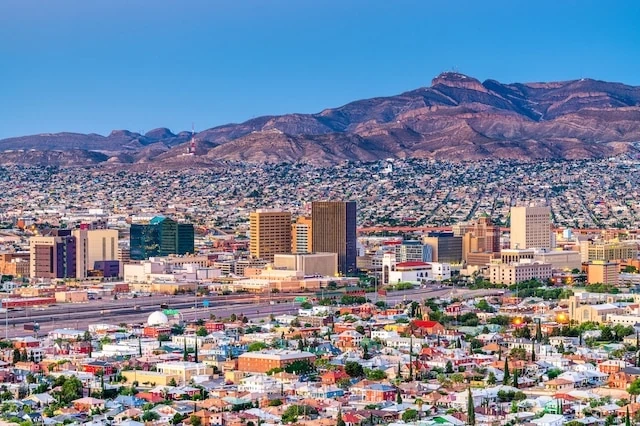
- Average monthly P+I: $1,562
- Median annual household income: $55,710
- Population: 677,456
- Average % income spent on P+I: 33.7%
- Cost of living vs. U.S. average: -12.1%
El Paso sits on the Rio Grande across the U.S.-Mexico border, so unsurprisingly, it has an enormous Hispanic population that makes up more than 80% of residents. It also explains why this is one of the southwest’s best food cities—I still think about a lunch I had while passing through several years ago.
This Texas city is chock full of museums, including the El Paso Museum of Art, El Paso Museum of Archaeology, National Border Patrol Museum, and El Paso Holocaust Museum and Study Center. Other top attractions include the Plaza Theatre, or if you’d prefer to get out into nature, Hueco Tanks State Historic Site, Franklin Mountains State Park, and the El Paso Mission Trail.
El Paso is the most populous of America’s most affordable cities for homebuyers, at more than 675,000 residents, yet it has an average monthly principal and interest cost in the $1,500s. Relatively cheap utility, health care, and grocery costs also contribute to a cost of living that’s roughly 12% below the national average.
Related: 9 Best Fidelity Index Funds to Buy
6. Davenport, Iowa

- Average monthly P+I: $1,558
- Median annual household income: $59,890
- Population: 100,486
- Average % income spent on P+I: 31.2%
- Cost of living vs. U.S. average: -11.8%
Davenport is situated along the banks of the Mississippi River. It’s part of the “Quad Cities,” which despite the name is made up of five cities—Iowa’s Bettendorf, and Illinois’ Rock Island, Moline, and East Moline, are the other four.
Lovers of the color green will love Davenport’s St. Patrick’s Day parade, which is among the largest in the country. Other noteworthy city events include the Quad-City Times Bix 7 race, the Mississippi Valley Blues Festival, and the Festival of Trees. You can catch the Quad Cities River Bandits at the acclaimed Modern Woodmen Park. Or you can pick up a little culture at the Figge Art Museum, Quad City Symphony Orchestra, Adler Theater, and German American Heritage Center.
Davenport barely made the cut with a population of just more than 100,000. But it has a secure position among the cheapest places to buy a home in America, with an annual monthly P+I of $1,558. Low housing expenses are the predominant factor behind Davenport’s nearly 12% below-average cost of living, though slightly cheaper-than-average costs of groceries, utilities, and miscellaneous goods and services help.
Related: 10 Best Vanguard Funds to Buy for the Everyday Investor
5. Rockford, Illinois

- Average monthly P+I: $1,465
- Median annual household income: $50,744
- Population: 146,713
- Average % income spent on P+I: 34.7%
- Cost of living vs. U.S. average: -14.2%
Rockford, aka “the Forest City,” sits in northern Illinois, about a half-hour’s drive from the southern Wisconsin border. While the city’s forests aren’t nearly what they were when Rockford earned its nicknames, outdoor lovers can still rejoice at the 20,000 acres of green space, four rivers, golf courses, Anderson Japanese Gardens, Nicholas Conservatory and Gardens, and Rock Cut State Park. And if you’re looking for a Rockford attraction that really rocks, check out Rockford’s Rockmen Guardians along the Rock River recreation path.
But don’t worry: When winter’s bitter cold hits, there’s plenty to do indoors, including the Frank Lloyd Wright Laurent House, Midway Village & Museum Center, Discovery Center Museum, and Burpee Museum of Natural History.
Rockford’s $1,465 average monthly principal and interest puts it within the five most affordable housing markets among U.S. cities with more than 100,000 residents. Its cost of living, which is more than 14% below the national average, benefits from cheaper-than-usual prices for utilities, groceries, and miscellaneous goods and services.
Related: 10 Best Vanguard Index Funds to Buy
4. Lafayette, Louisiana

- Average monthly P+I: $1,449
- Median annual household income: $58,850
- Population: 121,389
- Average % income spent on P+I: 29.6%
- Cost of living vs. U.S. average: -13.4%
Lafayette—a home to Creole and Cajun culture and cuisine—is located along the Vermillion River in southern Louisiana. And it’s a place where you can have a good time. In addition to grand Mardi Gras celebrations, the city hosts many other festivals, such as the Festival International de Louisiane and the Festival Acadiens et Creole.
But you don’t have to wait for a festival to dive into the area’s unique history and heritage. You can visit the Lafayette Farmers and Artisans Market, Vermilionville or Acadian Villiage’s recreated period buildings, or spot alligators at Lake Martin Rookery. The city is also home to the University of Louisiana’s largest campus—University of Louisiana at Lafayette.
According to C2ER data, residents of Lafayette only need $1,449 to pay principal and interest on a new 2,400-square-foot home. They’ll also spend nearly 15% less on health care than the rest of the country, as well as below-average prices on all over C2ER categories, including groceries, utilities, transportation, and miscellaneous goods and services. That all adds up to a cost of living that’s 13% below the national average.
Related: Pensions Aren’t Dead Yet: 15 Jobs With Pensions
3. Amarillo, Texas

- Average monthly P+I: $1,449
- Median annual household income: $60,628
- Population: 201,291
- Average % income spent on P+I: 28.7%
- Cost of living vs. U.S. average: -14.7%
Another Lone Star State locale where you can buy a home for relatively cheap is Amarillo, located in the Texas Panhandle. This popular stop along Route 66 boasts attractions including the Cadillac Ranch, RV Museum, Texas Air and Space Museum, and the American Quarter Horse Hall of Fame & Museum.
And whether you want to be a cowboy or just mingle with them, this is the place. Palo Duro Canyon, the second largest canyon in the United States, offers beautiful rocky views as you hike or go horseback riding.
If you think people are joking when they say everything is bigger in Texas, I’d say to stroll over to the Big Texan Steak Ranch for its 72-oz. Steak Challenge, where you get 60 minutes to down 4½ pounds of steak (and dinner sides!) to get all that eatin’ for free.
To be fair, everything isn’t bigger in Texas. People who just want to buy a home can actually expect significantly smaller prices—P+I of $1,449 per month is 39% cheaper than the national average! That, as well as notably low healthcare, transportation, grocery, and other fundamental costs result in Amarillo residents enjoying a cost of living that’s roughly 15% lower than the U.S. average.
Related: 7 Best Schwab Funds to Buy
2. Augusta, Georgia
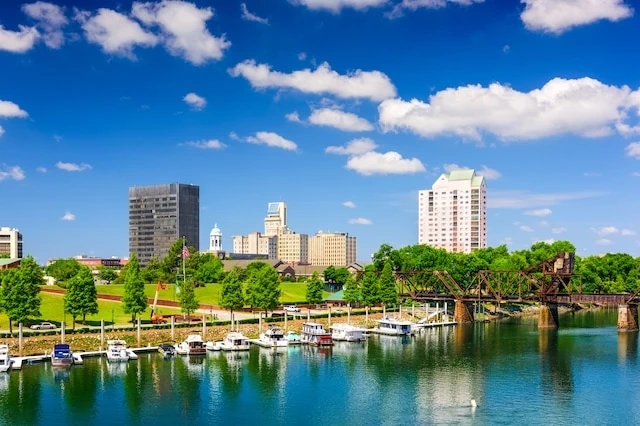
- Average monthly P+I: $1,447
- Median annual household income: $50,492
- Population: 202,096
- Average % income spent on P+I: 34.4%
- Cost of living vs. U.S. average: -15.7%
Hello, friends. Augusta, one of the South’s more beautiful cities and home to golf’s greatest tournament, sits on Georgia’s eastern border. Sitting just across the Savannah River is North Augusta, South Carolina, and Augusta is also connected to Aiken, South Carolina, via U.S. Route 1. (I bring this up because C2ER data for Augusta is drawn from this entire Augusta-Aiken metro area.)
Augusta is loaded with activities. When the weather is nice, people visit the Phinizy Swamp Nature Park or Augusta Canal Tours. When it’s not, you might consider a trip to the Augusta Museum of History, Morris Museum of Art, or Imperial Theatre. The city is also filled with indoor and outdoor murals, and it hosts disc golf tournaments, drag boat races, and even Half Ironman competitions.
But Augusta is best known for The Masters—the jewel of the PGA Tour and the most prestigious golf tournament in the world—which will be celebrating its 90th anniversary in 2024. The tournament, held at Augusta National Golf Club, is known not just for its exciting finishes and green jackets, but its vibrant azaleas and still-dirt-cheap pimento cheese sandwiches.
Actually, just about everything is cheap—or at least cheaper than the national average—according to C2ER data. Groceries, health care, utilities, transport, and miscellaneous goods and services all sit well below the national average. But housing is particularly inexpensive; average monthly P+I of $1,447 is almost 40% less than the U.S. norm.
Related: 7 Best Schwab Index Funds to Buy
1. McAllen, Texas

- Average monthly P+I: $1,365
- Median annual household income: $56,326
- Population: 144,579
- Average % income spent on P+I: 29.1%
- Cost of living vs. U.S. average: -19.1%
Fast-growing McAllen, Texas, is known for its birding hotspots—the city claims it’s the “most productive birding location in North America” and boasts that people from around the world come to view 540 bird species and more than 330 butterfly species.
But McAllen’s best-known flying migrators are the snowbirds. McAllen is located in southern Texas, so while its summers are scorching, its mild winter weather generates a large influx of part-time residents from the northern U.S. and Canada. Indeed, the Canadian Snowbird Association recently held its 2024 Winter Texans’ Snowbird Extravaganza in the McAllen Convention Center.
If you think both birds and snowbirds are for the birds, you can instead enjoy a robust shopping scene, including the La Plaza Mall. McAllen also hosts the largest single-floor public library in the country and the International Museum of Art & Science.
As far as American cities go, McAllen is a great place to buy a house on the cheap. The average monthly P+I on a 2,400-square-foot home is just $1,365, or 43% less than the U.S. mean! Health care is nearly a quarter cheaper than it is in the rest of the country, and you’ll also pay less for groceries, transportation, and miscellaneous goods and services. That all adds up to a cost of living that’s 19% less than the national average.
Related: 10 Best Dividend Stocks to Buy








